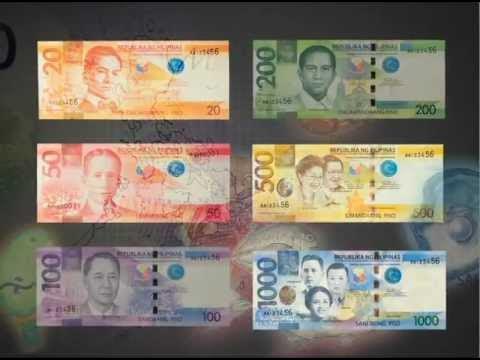The History of Philippine Money
Summary
TLDRThe Philippine currency's evolution reflects the nation's rich history, from barter tokens to modern banknotes. Early forms included cowry shells and gold piloncitos. Spanish colonization introduced coins like the dos mundos, while American rule established the Philippine Peso. Japanese occupation brought 'Mickey Mouse money' due to hyperinflation. Post-war, the Central Bank of the Philippines issued new currencies with enhanced security features. The New Generation Currency series introduced polymer banknotes, and commemorative issues honor national figures, reflecting the country's journey and cultural identity.
Takeaways
- 🏝️ The Philippine currency has a rich history, evolving from barter tokens with Javanese letters to modern banknotes featuring Filipino language and culture.
- 🐚 Cowry shells were the earliest form of currency in the Philippines, used for centuries before the arrival of the Spanish.
- 🏺 Gold was abundant and used to create the first coins called piloncitos, which had inscriptions similar to Javanese script.
- 👑 Spanish colonization introduced new coins like the cob and dos mundos, which represented Spanish dominion over the Old and New Worlds.
- 🏦 The first Philippine bank, El Banco Español Filipino de Isabel II, was established in 1851 and began printing the first local currency.
- 🏛️ The Malolos Constitution in 1899 led to the issuance of the First Philippine Republic's currency, including revolutionary notes and copper coins.
- 🏳️🌟 After the Spanish-American War, the U.S. introduced the Philippine Peso valued at half of the US dollar, with coins designed by Filipino engraver Melecio Figueroa.
- 🎖️ The Japanese occupation during World War II brought about 'Guerilla notes' and 'Mickey Mouse money', leading to hyperinflation and economic disruption.
- 🏦 The Central Bank of the Philippines (BSP) was established in 1949, centralizing currency issuance and introducing new designs and security features.
- 💵 The New Generation Currency series introduced in recent years includes the first polymer banknote, enhancing durability and security against counterfeiting.
- 🏗️ Currency in the Philippines has been a reflection of historical events, cultural elements, and national identity, with banknotes often featuring Filipino heroes and significant historical moments.
Q & A
What was the initial form of currency in the Philippines before the Spanish colonization?
-The very first form of currency in the Philippines were cowry shells, which were made with gold, jade, quartz, and wood, and were used for centuries.
What does the inscription 'M.A.' on the piloncitos coins signify?
-The inscription 'M.A.' on the piloncitos coins may have been a representation of the name of the islands before Spanish colonization, with many believing that the islands were named Ma-i or Mayi by the Chinese.
How did the Spanish influence the Philippine currency during their colonization?
-The Spanish introduced coins such as cobs or macuqinas, and later the Dos Mundos, which represented Spanish dominion. They also centralized the government and improved the revenue and tax collection system.
What was the significance of El Banco Español Filipino de Isabel II in the Philippine monetary history?
-El Banco Español Filipino de Isabel II, established in 1851, was the first bank in the Philippines and Southeast Asia. It was given the power to print Philippine currency, marking the first time Philippine pesos were printed in the country.
What changes occurred in the Philippine currency after the Declaration of Independence in 1898?
-After the Declaration of Independence in 1898, the First Philippine Republic issued its own currency, including two-centavo copper coins and revolutionary notes labeled 'Republica Filipina Papel Moneda.'
How did the American occupation impact the Philippine currency system?
-During the American occupation, the Philippine Coinage Act of 1903 was passed, establishing the Philippine Peso valued at half of the US dollar. It also introduced new banking, currency, and credit systems.
What were the 'Guerilla notes' and 'war notes' during the Japanese occupation of the Philippines?
-Guerilla notes, also called Resistance Currencies, were low denomination notes issued by provinces and municipalities as a show of resistance against the Japanese forces. War notes were high denomination notes issued by the Japanese Occupation Forces, which had no back-up reserves and were dubbed 'Mickey Mouse money' by Filipinos.
What was the role of the Central Bank of the Philippines (BSP) in the post-World War II era?
-After World War II, the Central Bank of the Philippines (BSP) was established in 1949, taking over the right to issue Philippine pesos from the Bank of the Philippine Islands (BPI), and was actively involved in the post-war reconstruction of the country.
What is the significance of the 'Filipinization' of Philippine currency in 1969?
-The 'Filipinization' of Philippine currency in 1969 introduced the Pilipino Series, which featured multi-colored Central Bank notes worded in Filipino, with intricate designs reflecting Philippine culture and history, and depicted Filipino heroes and vignettes of Philippine history.
How have polymer banknotes impacted the Philippine currency system?
-In April 2022, the BSP began circulating the new 1000-peso polymer banknotes, the first polymer banknote in the Philippines. Polymer banknotes offer greater durability, resistance to moisture, and enhanced security features, making them difficult to counterfeit.
Why are commemorative currencies significant in the Philippines?
-Commemorative currencies in the Philippines honor heroes, historical events, and places, contributing to the status and recognition of significant figures and events. They also become collector's items and help inculcate a sense of national identity.
Outlines

Esta sección está disponible solo para usuarios con suscripción. Por favor, mejora tu plan para acceder a esta parte.
Mejorar ahoraMindmap

Esta sección está disponible solo para usuarios con suscripción. Por favor, mejora tu plan para acceder a esta parte.
Mejorar ahoraKeywords

Esta sección está disponible solo para usuarios con suscripción. Por favor, mejora tu plan para acceder a esta parte.
Mejorar ahoraHighlights

Esta sección está disponible solo para usuarios con suscripción. Por favor, mejora tu plan para acceder a esta parte.
Mejorar ahoraTranscripts

Esta sección está disponible solo para usuarios con suscripción. Por favor, mejora tu plan para acceder a esta parte.
Mejorar ahora5.0 / 5 (0 votes)






